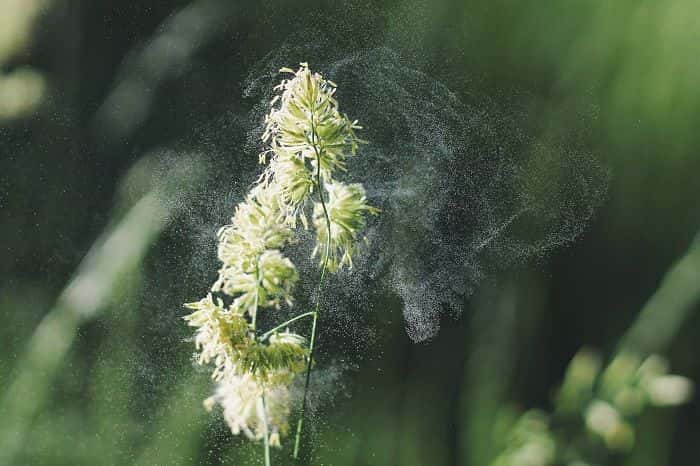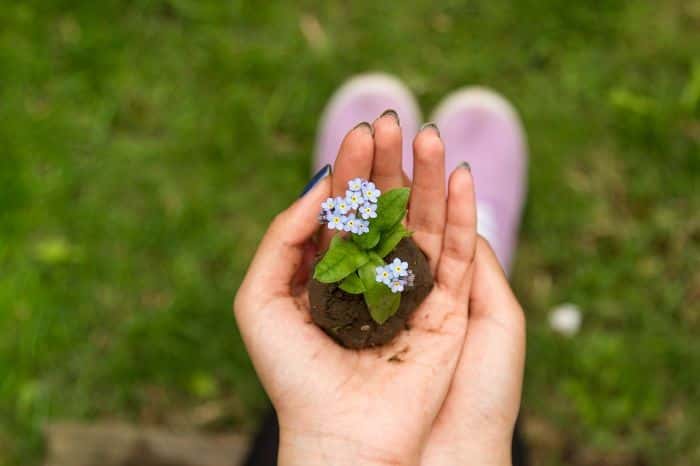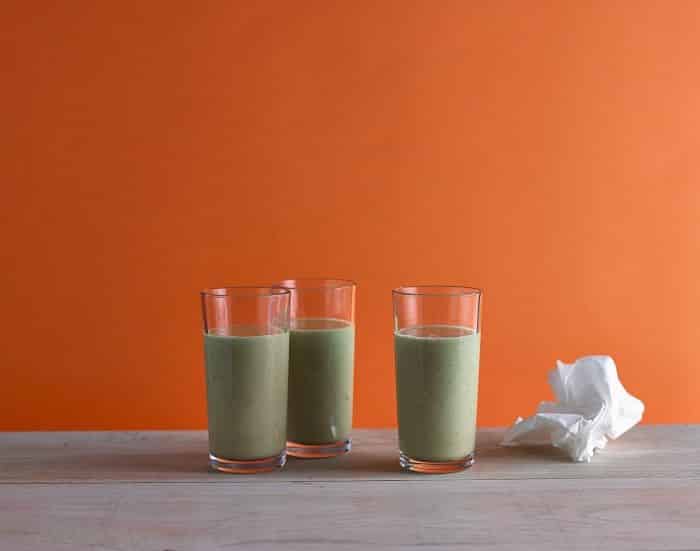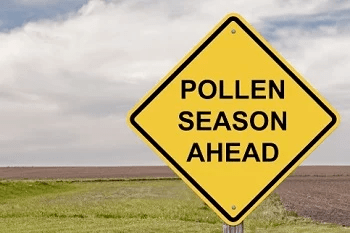By Push Doctor
How To Get Rid Of Hay Fever – 25 Tips
Hay fever affects one in five people in the UK and when your symptoms flare up, it can really ruin your day. However, with a bit of planning, you can win the battle and get relief.
Backed by our smart network of UK doctors, we’re going to show you how to stop sneezing, itching and achieve true hayfever relief this summer.

What causes hay fever?
Hay fever, sometimes written as 'hayfever', is the name given to any pollen allergy. There are three types of pollen that you might be allergic to; tree pollen, grass pollen and weed pollen.
These all produce light, fine pollen that’s carried from one plant to another by the wind. Unfortunately, hay fever sufferers often find themselves caught in the middle.
Other plants produce a heavy, sticky pollen that can’t get carried by the wind, so they rely on insects to do the job. In many cases, an attractive flower is more likely to be insect-pollinated, as its brightly coloured petals are designed to tempt insects.
If you get hay fever, you don’t need to worry as much about these plants when you go outside.
When is pollen season?
Some people are allergic to one type of pollen, while others are unfortunate enough to suffer symptoms caused by all three.
To find out which types of pollen cause your allergic reaction, it helps to know when each one has its peak season.
According to the Met Office, the UK hay fever season lasts from late March all the way through to September. This is how they’ve broken it down across the year. Your personal hay fever season will depend on the type of pollen you’re allergic to.
- Tree pollen: late March - mid May
- Grass pollen: mid May - July
- Weed pollen: late June - September

What to do if you have hay fever
Finding hayfever relief can often feel like a full time job. We’ve broken our advice down into four clear categories to help you keep on top of your allergies.
Skip to:
1. At Home
2. Out and About
3. Eating and Drinking
4. Choose an Effective Treatment
AT HOME
While pollen tends to spend most of its time outside, it can be hard to keep it out of your home. It can get in through windows, or you could bring it in without knowing it. Here are a few ways you can find hay fever relief from the comfort of your living room.
1. Change when you get in
When you’re outside, pollen can stick to your clothes. This might explain why you’re feeling sneezy long after you get home. Changing into something else straight away is a good idea.
2. Give your coat a shake
We all have clothes we wear most days, such as a favourite coat or jacket. To make sure you don’t start the day with an unwelcome dose of pollen, give your coat a good shake before you put it back on. Just remember to do it outside!
3. Dry clothes inside
Washing your clothes will get rid of pollen, but drying them outside could put you back where you started, especially if it’s a windy day. If you can, dry clothes inside to stop pollen getting to them.
If you don’t have enough space to do this, at least ensure you don’t have clothes out in the early morning or the evening, when pollen levels are highest.
4. Rinse your hair regularly
Your hair is another place for pollen to latch on and cause hay fever symptoms, so giving it a regular rinse will stop this happening. You don’t need to use any shampoo here. Water will do the job fine on its own.
5. Keep pets clean
Stopping people bringing pollen into your home is one thing. Stopping pets is a little more challenging.
The best you can do is give them a regular brush or bath during your hay fever season. They probably won’t like it, but it’s for your own good.
6. Watch the weather forecast
This is easy enough. Just pay attention during the weather forecast and you’ll usually discover whether pollen is out in force that day. If the pollen count isn’t mentioned, you can find out from your local news website.
7. Hide from high pollen counts
As unfair as it sounds, if the pollen count is really high and your symptoms are severe, it might be best to stay indoors.
8. Keep windows closed
If pollen can’t get to you, your hay fever won’t flare up. This may be difficult on a really hot day, so make sure you have a fan or air conditioning to keep you cool.
9. Avoid gardening
This is good news for anyone who hates mowing the lawn. Gardening is obviously going to leave you exposed to pollen, so this is one chore you can excuse yourself from.
Having said that, some grasses are more likely to release pollen the taller they’re allowed to grow, so if you can, get someone who doesn’t have hay fever to do it for you.

OUT AND ABOUT
Going outside is an unavoidable part of the day for most of us. If you’re worried about hay fever, here are a few ways you can reduce your risk.
10. Choose your sunglasses carefully
Sunglasses can shield your eyes from more than just the sun. If itchy eyes are one of your hay fever symptoms, the right pair of shades can help keep pollen away. Wraparound styles are the most effective here.
11. Defend your nose
Anything you can do to stop pollen getting into your nose will help stop hay fever symptoms. One way to do this is by applying Vaseline around your nostrils to trap the pollen.
12. Stop smoking
You knew this one was coming! Like any form of air pollution, cigarette smoke will irritate the lining of your airways and make your allergies worse.
13. Leave the city
While you’d imagine hay fever symptoms would be worse in the countryside (where more plants are), some studies have shown that they can be more likely in a big city.
Increased air pollution is the reason for this. There are at least 40 UK towns and cities that the World Health Organisation has identified as exceeding normal air pollution levels.
While your symptoms won’t technically be hay fever, they’ll be pretty much the same.
14. Head for the seaside
A trip to the beach could be just what you need to calm your symptoms, as that refreshing sea breeze blows pollen inland before it can get to you.

EATING AND DRINKING
You might not have considered that what you eat and drink can have an impact on your hay fever, but it can. Find out what you need to get more of and, just as importantly, what you should avoid.
15. Eat a spicy meal
If your hay fever causes a stuffy, blocked nose, a hot curry could be the answer. Spicy chilli peppers can help to widen your airways and make it easier to breathe, while other spices, such as turmeric, are natural anti-inflammatories that will help relieve your symptoms.
16. Choose your ingredients carefully
One of the best nutrients for hay fever is a flavanol called quercetin, which studies have shown can suppress histamine production. Foods that are high in quercetin include green vegetables, berries, beans and apples.
Eating foods rich in beta carotene (carrots, spinach, any yellow fruit) and omega 3 (oily fish) are two more ways to soothe your blocked nose and painful sinuses.
17. Try a new tea
If you like to start the day with a cup of tea, there are lots of options that will help you manage your hay fever.
Try a chamomile or nettle tea to relieve your symptoms, as both have antihistamine and anti-inflammatory properties.
18. Stay away from food that produces histamine
Histamine is the chemical your body produces in response to infection. It causes swelling that protects your body, but in hay fever sufferers, it’s released when it’s not needed.
The last thing you want to do is make your symptoms worse, so you need to avoid foods that either contain histamine or will encourage your body to produce more of it. The offending items include pickles, cured and smoked meat and fish, cheese and nuts.
Some fruits encourage your body to release histamine and make your hay fever worse, so if your mouth feels tingly when you eat a certain fruit, this might explain why.
19. Avoid alcohol
While it’s tempting to relax with an alcoholic drink on a hot summer’s day, it’s unfortunately packed with histamine.
20. Try our allergy-busting smoothie
If you’re looking for a quick hay fever remedy you can make at home, this delicious smoothie will do the trick.
To make enough for two portions, simple mix two bananas, two clementines, five dates, half an avocado, 120ml of almond milk and a squeeze of lemon in a blender.
It provides plenty of quercetin and is also high in Vitamin C, which will boost your immune system.

CHOOSE AN EFFECTIVE TREATMENT
For many sufferers, medication can help with symptoms. To ensure you’re getting the best hay fever treatment, consider these factors and ask our doctors to help you find the most effective medicine.
21. Find the right antihistamine
Antihistamines are the most common hay fever treatment. Use them when you experience symptoms or, if you know which type of pollen you’re allergic to, you can take them during your hay fever season to stop symptoms before they happen.
However, some antihistamines may make you drowsy, so it’s important to see a doctor and make sure you’re getting an effective medicine that won’t disrupt your day.
22. Ask about nasal sprays
If a blocked nose is your main problem, our doctors can suggest an effective a nasal spray. It’s important to choose the correct spray for you. A simple decongestant may be all you need, while more severe symptoms may require a prescription for a corticosteroid spray.
23. Ask about eye drops
For hay fever sufferers who are mainly affected by problems with their eyes, eye drops can help. They contains antihistamines and can help with symptoms such as itching, redness and watering.
24. Take a test
If you want quick answers about the sort of pollen you’re allergic to, you can see a doctor and arrange for you to take a blood test. This will reveal what’s responsible for setting off your symptoms and help you create an effective hay fever treatment plan.
25. Keep a hay fever diary
If you’re happy to play the long game, noting down when your symptoms occur each year might help you notice patterns. This will help you prepare in future years, as you’ll know when your symptoms are likely to be at their worst.
Having trouble with hay fever?
If you’re tired of hay fever getting in the way of your day, our doctors are here to help.
Once they’ve discussed what your symptoms are and when they appear, they’ll recommend the best hayfever relief treatment available, from lifestyle changes to prescription medication.
If you do need a prescription, our doctors can provide this immediately and we’ll arrange for your medication to be available the same day.


